这个项目实现了:
a) 网站过滤:允许/不允许访问某些网站;
b) 用户过滤:支持/不支持某些用户访问外部网站;
c) 网站引导:将用户对某个网站的访问引导至一个模拟网站(钓
鱼)。
d) 缓存功能:要求能缓存原服务器响应的对象,并能够通过修改请求报文(添加 if-modified-since头行),向原服务器确认缓存对象是否是最新版本
首先,先要把django包内的C:\Python27\Lib\site-packages\django\core\handlers\base.py 中的^$改为.* 。(共有两处需要修改),以此来保证能让所有的url目标都传到views里面的函数中。
如图
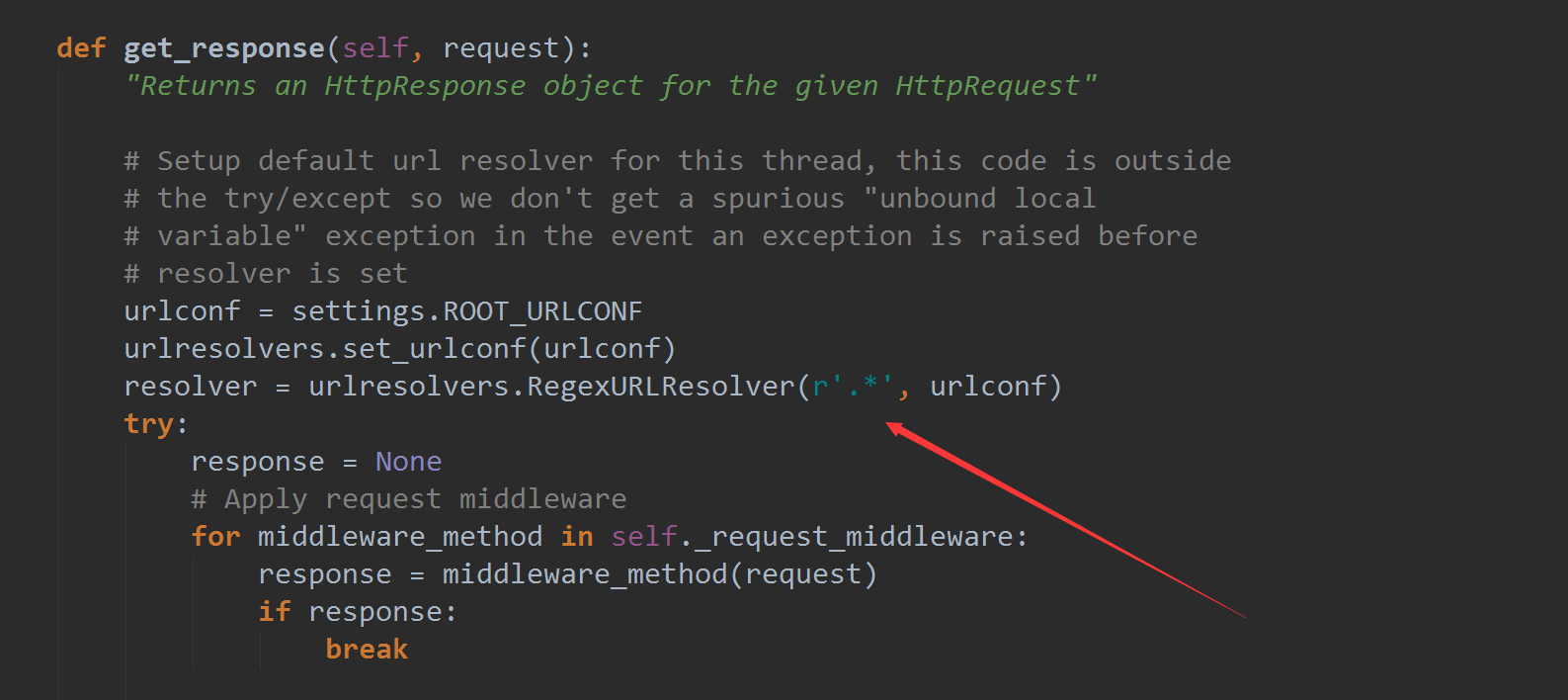
然后构建一个django项目,可以不带有admin模块,然后建立一个新的app
博主构建的项目结构如下,其中Cache.py是一会再创建的
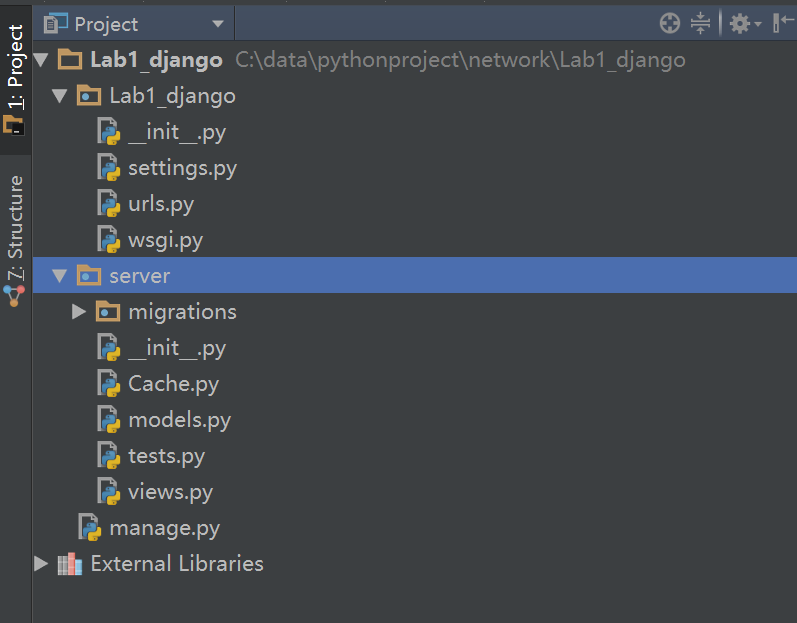
下面是models.py的代码
1
2
3
4
5
6
7
8
9
10
11
12
13
14
15
16
17
18
19
20
21
22
23
24
25
26
27
28
29
30
31
32
33
34
35
36
37
38
39
40
| #coding=utf8
from django.db import models
class fish(models.Model):
#钓鱼规则表
user_ip = models.CharField(max_length=15) #客户ip
forbidden_host = models.CharField(max_length=100) #禁止的host
fish_url = models.CharField(max_length=100) #跳转的网站链接
class firewall(models.Model):
#黑名单规则表
user_ip = models.CharField(max_length=15) #客户ip
forbidden_host = models.CharField(max_length=100) #禁止的host
class cache(models.Model):
#缓存表
timestamp = models.CharField(max_length=80) #时间戳
name = models.CharField(max_length=150) #文件名对应的url
content_type = models.CharField(max_length=50) #内容类型
content = models.TextField() #内容
def check_if_replace(user_ip, host):
user_list = firewall.objects.filter(user_ip=user_ip).all() #先到黑名单中查找
for user in user_list:
if user.forbidden_host in host or host == '*':
return (1, '<h1>You have been forbidden!</h1>') #返回禁止页
general = firewall.objects.filter(user_ip='*').all()
for i in general:
if i.forbidden_host in host:
return (1, '<h1>You have been forbidden!</h1>')
fish_list = fish.objects.filter(user_ip=user_ip).all() #然后到钓鱼规则中查找
for fisher in fish_list:
if fisher.forbidden_host in host:
return (-1, fisher.fish_url)
return (0, host)
|
这一部分是用来做规则的存储和缓存的存储,migrate之后各表如下所示
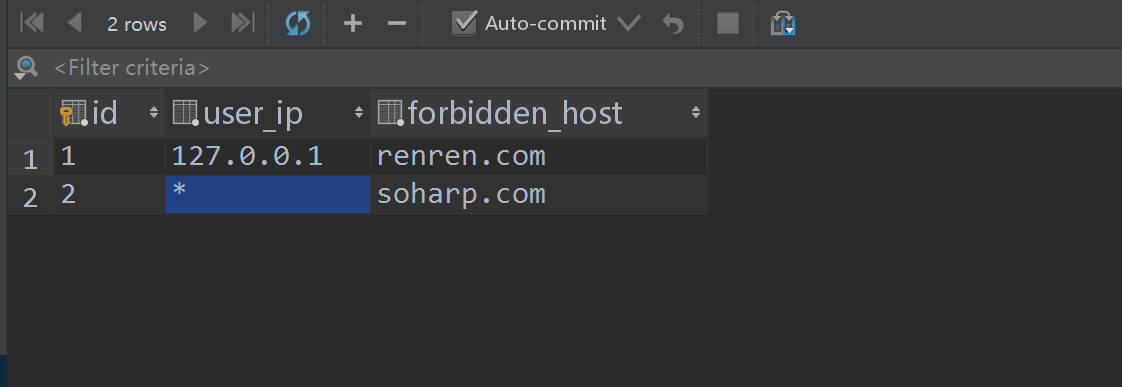 这张表用来做禁止规则的配置,可以用’*‘作为通配符,实现所有用户对单一网站和对某用户做屏蔽。
这张表用来做禁止规则的配置,可以用’*‘作为通配符,实现所有用户对单一网站和对某用户做屏蔽。
 这张表用来做钓鱼规则的配置,用户转到指定的目标
这张表用来做钓鱼规则的配置,用户转到指定的目标
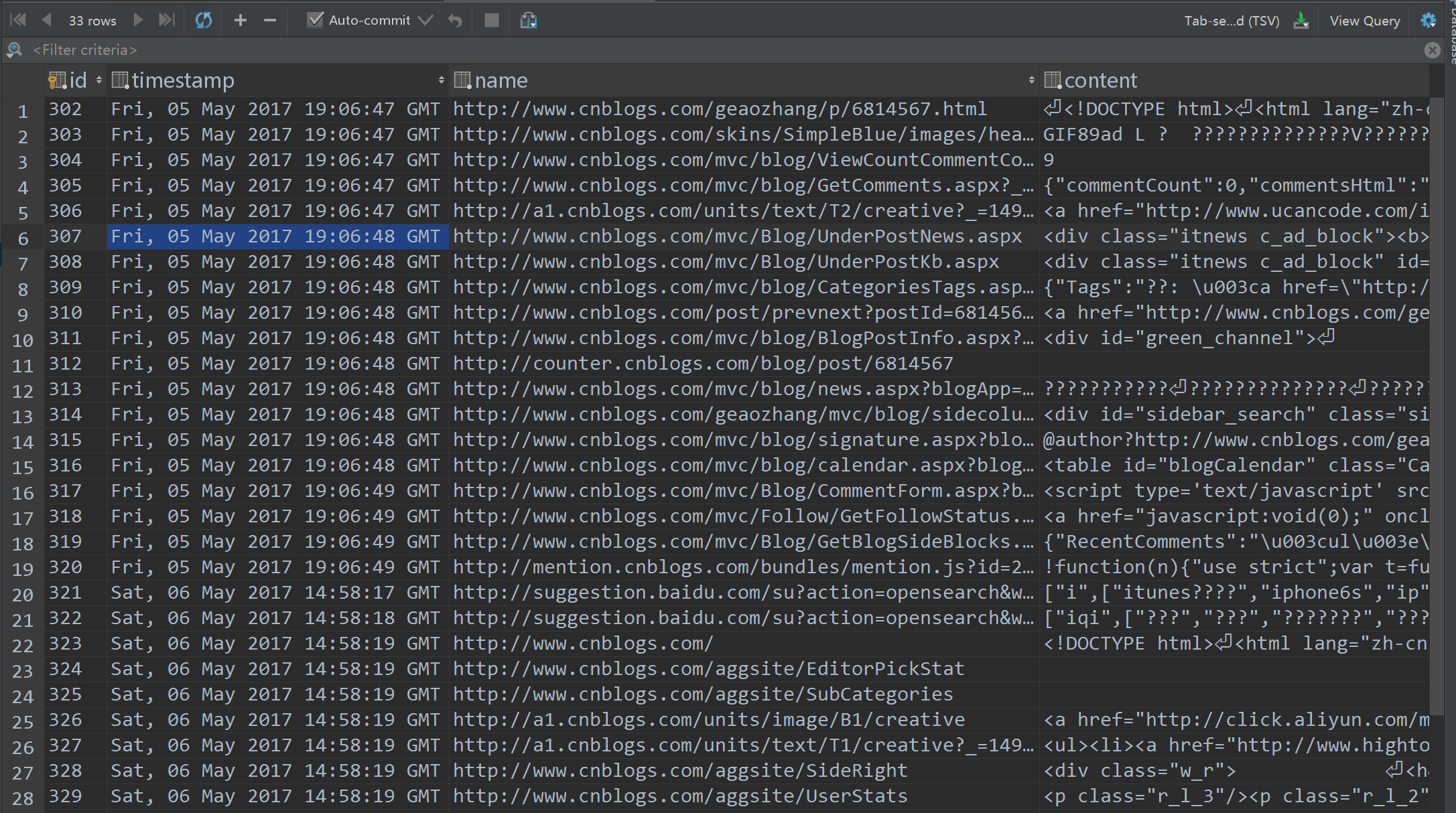 这张表作为缓存的实现
这张表作为缓存的实现
views.py的代码:
1
2
3
4
5
6
7
8
9
10
11
12
13
14
15
16
17
18
19
20
21
22
23
24
25
26
27
28
29
30
31
32
33
34
35
36
37
38
| #coding=utf8
import re
from contextlib import closing
from django.http import HttpResponse,HttpResponseRedirect
from Cache import *
def home(request):
url = request.path[1:].split('/')
url = url[0] + '//' + url[1] + '/'
url = request.path[1:].replace(':/', '://') #获得目标url
host = request.get_host()
method = request.method
if request.META.has_key('HTTP_X_FORWARDED_FOR'):
ip = request.META['HTTP_X_FORWARDED_FOR'] #获取客户端ip
else:
ip = request.META['REMOTE_ADDR']
regex = re.compile('^HTTP_')
headers = dict((regex.sub('', header), value) for (header, value)
in request.META.items() if header.startswith('HTTP_'))
if len(request.REQUEST.items()) > 0:
url += '?'
for (i, j) in request.REQUEST.items():
url += str(i) + '=' + str(j) + '&'
url = url[:-1] #将带参数的get请求恢复成原始链接状态
check_tuple = check_if_replace(ip, host)
if check_tuple[0] == 1:
return HttpResponse(check_tuple[1]) #如果符合黑名单规则,返回禁止页
elif check_tuple[0] == -1:
url = check_tuple[1]
return HttpResponseRedirect(url) #如果符合钓鱼规则,那么重定向到指定的网站
cacher = Cache(url)
if cacher.check_cache(): #检查是否有与目标网站一致的资源
res = cacher.get()
return HttpResponse(res[0], content_type=res[1]) #将缓存的内容返回
else:
with closing(requests.request(method, url, headers=headers, data=request.POST, stream=True)) as r:
cacher.update(bytes(r.content), content_type=r.headers['content-type']) #更新缓存
return HttpResponse(bytes(r.content), status=r.status_code, content_type=r.headers['content-type']) #返回资源
|
Cache.py的代码
1
2
3
4
5
6
7
8
9
10
11
12
13
14
15
16
17
18
19
20
21
22
23
24
25
26
27
28
29
30
31
32
33
34
35
36
37
38
39
40
41
42
43
44
45
46
47
48
49
50
51
| #coding=utf8
import requests
from models import *
import time
class Cache():
def __init__(self, url):
self.url = url
def check_cache(self):
'''
检查是否有一致的缓存
:return: Boolean型
'''
try:
f = cache.objects.get(name=self.url)
headers = {'If-Modified-Since': f.timestamp}
if requests.get(self.url, headers=headers).status_code == 304:
return True
else:
return False
except:
return False
def update(self, content, content_type):
'''
更新缓存
:param content: 内容
:param content_type: 内容类型
:return:
'''
try:
f = cache.objects.get(name=self.url)
f.content = content
f.content_type = content_type
f.name = self.url
t = time.asctime().split()
f.timestamp = t[0] + ', '+t[2] + ' '+t[1] +' '+t[4]+' '+t[3] + 'GMT'
f.save()
except:
f = cache()
f.content = content
f.name = self.url
t = time.asctime().split()
f.timestamp = t[0] + ', ' + t[2] + ' ' + t[1] + ' ' + t[4] + ' ' + t[3] + ' GMT'
f.content_type = content_type
f.save()
def get(self):
#获取缓存
f = cache.objects.get(name=self.url)
return (f.content, f.content_type)
|
最后修改urls.py
1
2
3
4
5
6
7
| from django.conf.urls import include, url
# from django.contrib import admin
from server.views import *
urlpatterns = [
# url(r'^admin/', include(admin.site.urls)),
url('.*',home),
]
|
为了防止post的时候受干扰,把settings.py中的中间件去掉csrf,剩下的如图

下面启动项目,监听8000端口

把浏览器设置代理为127.0.0.1:8000

打开博客园首页,正常显示
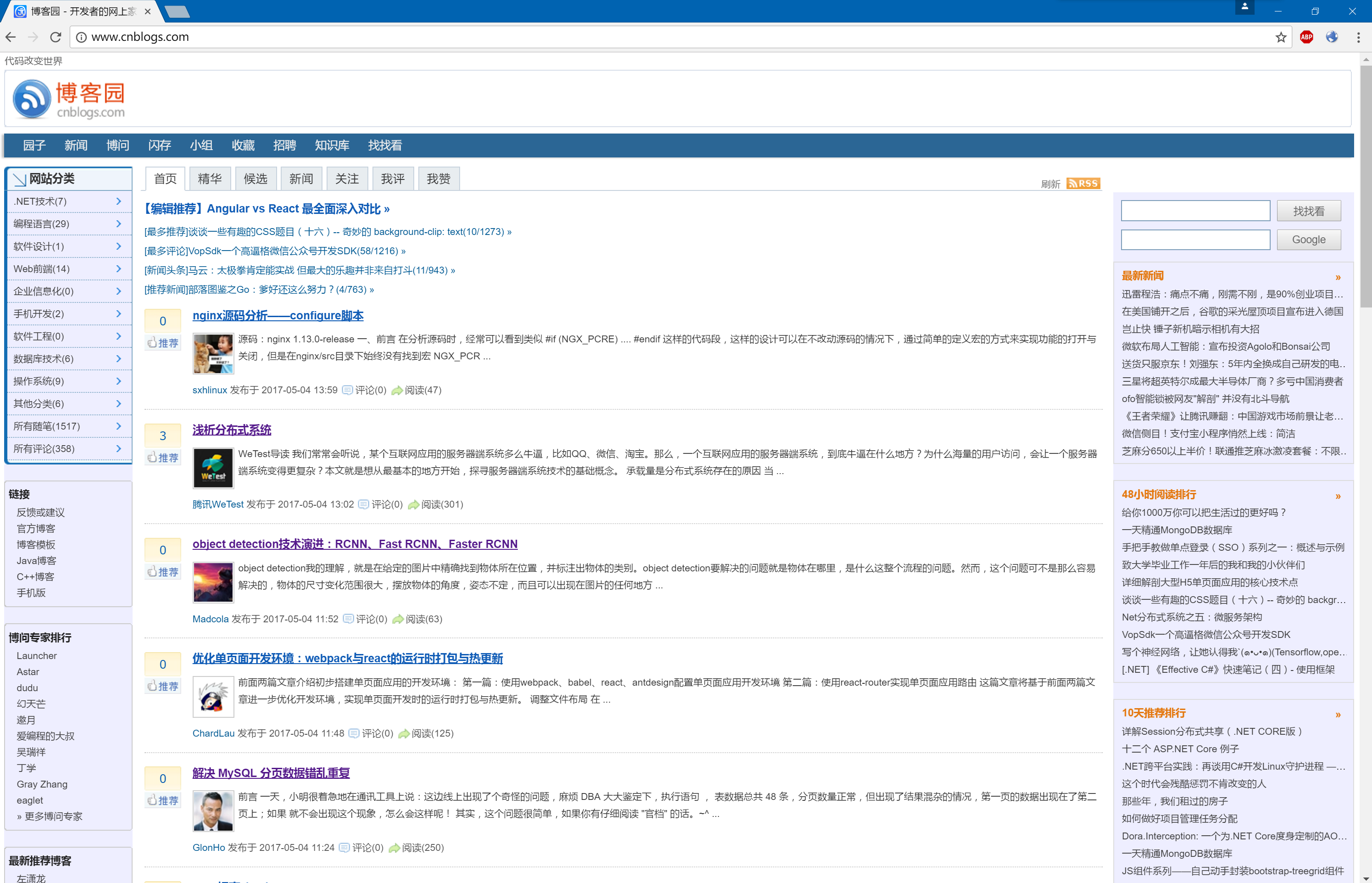
访问人人网,由于黑名单的表中有这条规则,返回我们写的禁止页
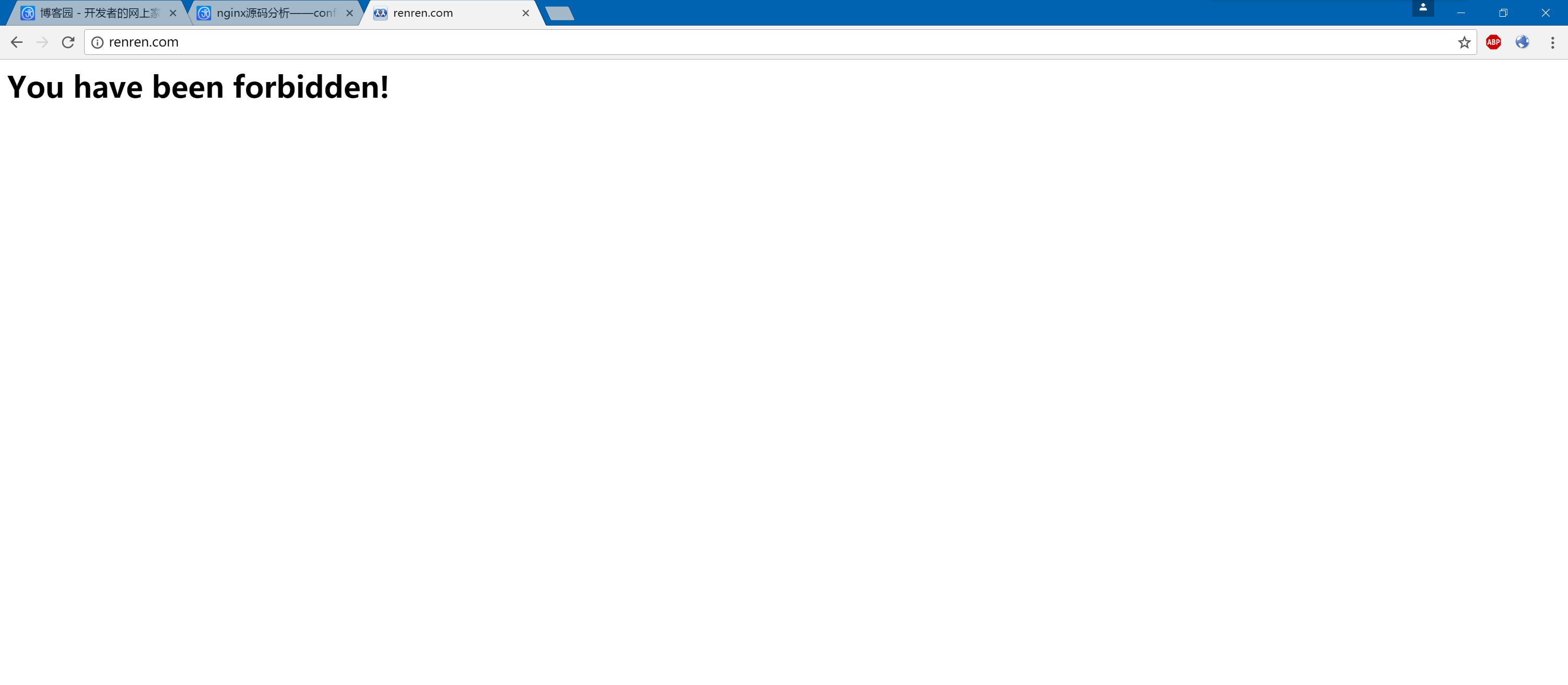
访问爱奇艺,由于钓鱼规则中配置了将爱奇艺引导到博客园,返回的是对博客园的重定向
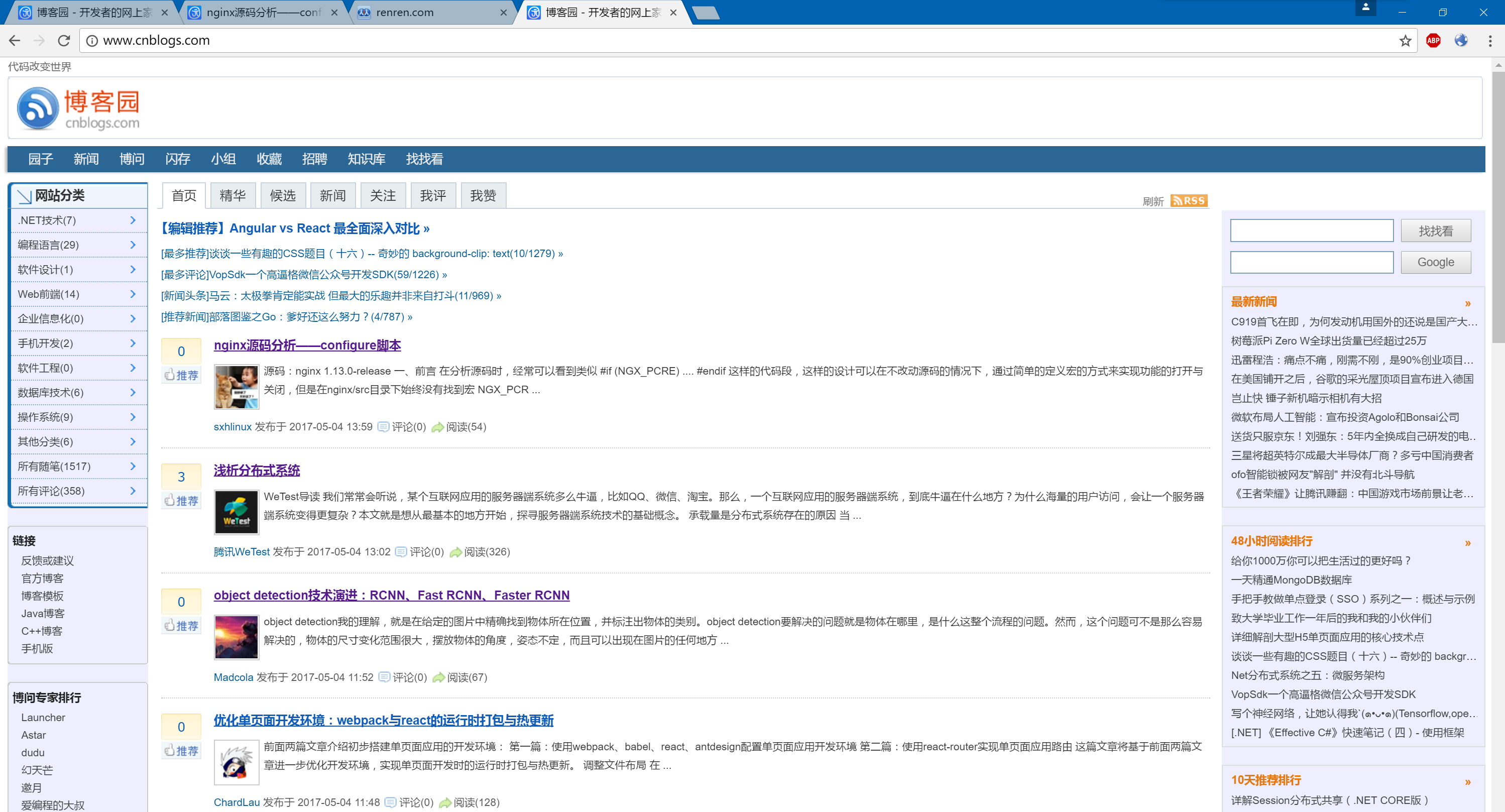
到此就完成了一个简单的HTTP代理服务器


 这张表用来做禁止规则的配置,可以用’*‘作为通配符,实现所有用户对单一网站和对某用户做屏蔽。
这张表用来做禁止规则的配置,可以用’*‘作为通配符,实现所有用户对单一网站和对某用户做屏蔽。 这张表用来做钓鱼规则的配置,用户转到指定的目标
这张表用来做钓鱼规则的配置,用户转到指定的目标 这张表作为缓存的实现
这张表作为缓存的实现




